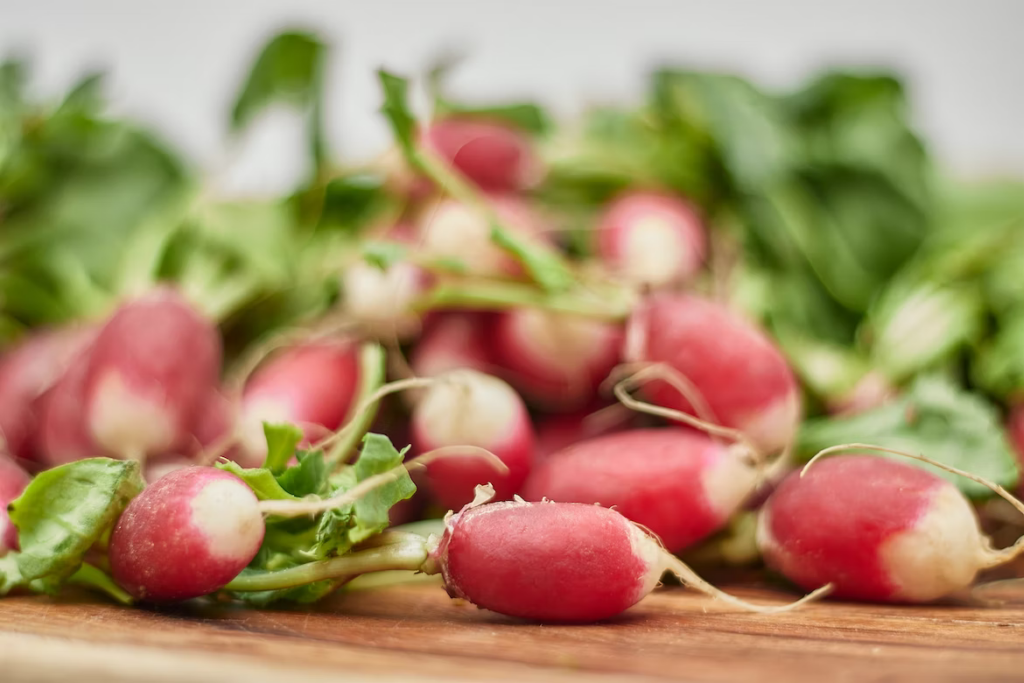Even more crops that can grow in cool weather if you want to be confident that the food you’re eating is healthy and natural.
Introduction
For those that want to know that they can trust they food they are eating, here’s another list of cold-resistant crops you can grow to feed yourself. We’ll go through various crops based and highlight whether they’re calorie or nutrient dense, their growing culture, how to plant or sow them, the best time to plant or sow them. In addition, you’ll learn how long each crop takes to grow, and how to harvest and store each one. Praise God and let’s get into it.
Swiss Chards

Swiss chard is a nutrient-packed, easy-to-grow, and high-volume food low in calories, fat, sodium, and cholesterol. It has many vitamins and minerals such as vitamin K, iron, potassium, magnesium, and vitamin E. Swiss chards are capable of growing in temperatures as low as 15°Fahrenheit or -9.4°C.
Swiss chards have 50-65 days to maturity after being planted.
Swiss chards grow in a culture where the soil pH is above 6.0. It grows best in cool and mild weather, specifically during early fall. As long as you keep harvesting older leaves after it grows, you can enjoy it all winter long. Seeds germinate or sprout in temperatures between 40–100°F (5–38°C), with an ideal temperature of 86°F (30°C). Seedlings or young plants can handle light frosts, and fully grown or mature plants can handle moderate frost.
To plant or sow swiss chards plant them half an inch deep, between two to six inches apart, in rows that are 18 inches apart. You can keep planting seeds at 10-day intervals for a month.
To harvest a swiss chard bunch you can cut mature leaves individually as new leaves grow for multiple harvests. To harvest baby leaves you can cut the leaves when they’re between three to six inches. It’s best to cut an inch above the soil to let it regrow cleanly.
Collard Greens
Collard greens are loose leaf greens with many vitamins, minerals, and antioxidants. Eating it regularly may lower your risk of getting certain diseases. It’s able to grow in temperatures as low as 5 degrees Fahrenheit or -15°C. It can handle frost and snow, with leaves that are tough and hardy in winter.
Collard greens have between 60-75 days to maturity after being planted or sowed. If they’re transplanted it can take 14 days sooner than normal.
The culture collard greens grow in is one that is well-drained, high in organic matter and moisture, and a soil pH between 6.0 and 7.5. The best time to plant them is during fall, winter, and early spring to avoid midsummer’s extreme temperatures. Winter and pest protection strategies include row covers, hoop houses, and cold frames to let them grow during winter and extend the harvest period.
To plant or sow collard greens it’s best to plant them three months before the expected fall frost. Plant seeds between a quarter and an inch deep, spacing each out between 18 to 24 inches apart.
To harvest them simply clip individual leaves so that the other ones can grow.
Broccoli
Broccoli is an easy to grow, low calorie, high volume food, primarily containing carbs and protein with little fat. It is high in nutrients including vitamin C, folate, vitamin K, and vitamin A. It can handle temperatures as low as 28 degrees Fahrenheit or 7°C, and it frost-tolerant.
Broccoli has between 50 to 70 days to maturity. Transplanted broccoli takes 20 days quicker than normal.
Broccoli grows best in a culture that is well-drained, has consistent moisture, has fertile soil high in organic matter, and a soil pH between 6.0 and 7.5.
The best time to plant broccoli is during mid to late summer so that it can grow during fall’s cool days and nights. This means planting it between 10 to 12 weeks before the expected first frost date in fall. As long as you plant or sow broccoli at a time where the harvest date is not during warm months you can avoid having bitter tasting broccoli. If the weather gets frosty you can use row covers to protect plants.
To plant or sow broccoli you must plant it half an inch deep with plants being 12 to 20 inches apart.
To harvest broccoli you can cut the center head before the flower buds open. You should hydro cool or ice it as soon as possible. To increase production cut the secondary side shoots.
Carrots
Carrots are a healthy source of carbohydrates and fiber while being low in fat, protein, and sodium. Carrots are high in vitamin A and have other nutrients like vitamin K, potassium, calcium, magnesium, and folate. They are frost-resistant and can handle light snow. They grow in temperatures as low as 15 degrees Fahrenheit or 9°C and can be harvested even if there’s snow on the ground. In addition, you can eat their leaves.
Carrots have 70 to 100 days to maturity.
The best culture to grow carrots is one with deep, loose, fertile, well-drained loamy soils and a soil pH range of 6.0-6.8.
The best time to plant or sow carrots is during early fall or spring. These are times where the soil is super damp, the sun’s not too bright, and the temperature’s not too hot.
To plant or sow carrots plant them a quarter inch under the soil three inches apart. For an ongoing supply you can plant them every three weeks after the first time you’ve planted them, evening during winter.
To fend off pests a row cover can handle adult insects.
To harvest carrots you can loosen the soil, then pull out the roots of the carrot. Begin by removing the green leaves so that they don’t suck moisture from the carrot root (the part that’s eaten) or cause wilting.
Peas
Peas are an easy-to-grow, nutrient-dense, low-calorie vegetable that gives filling fiber and protein. They are high in vitamin K, vitamin C, zinc, vitamin A, potassium, magnesium, folate, iron, and several B vitamins. They can grow in temperatures as low as 25°F (-4°C) and are snow-resistant.
Most varieties of peas are ready to harvest 60 to 70 days after planting.
Peas can grow best in a culture where the weather is cool. A soil pH level between 6.5 and 6.8 is ideal. If the pH is not there, you can use ground limestone or wood ash, ideally in the fall before spring planting.
The best time to plant or sow peas 4 to 6 weeks before the last spring frost date when the soil is cool or the soil is at the right temperature. Peas planted in cold soil, around 40cF will germinate or sprout slowly, and peas planted in soil that’s between 60 to 85°F will catch up. Several days where the temperature is between 10 to 20 degrees Fahrenheit (-6 to -12 degrees Celsius) may harm the peas’ growth. The other thing you can do is grow your peas in a cold frame.
Sow or plant pea seeds 1 inch deep, 2 inches apart in rows that are 7 inches apart.
Different variants of peas can be harvested or collected in different situations:
- snow peas when the delicate pods start showing immature seeds inside
- snap peas when the pods are plump, but still glossy and filed with sweet-tasting peas
- shell peas before the pods become waxy
Radishes

Radishes are a low-calorie food that is rich in Vitamin C. They also impart micro-nutrients like folate, vitamin B6, potassium, manganese, and calcium. There is also some fiber in radishes, although very little protein, and essentially no fat. They can grow in temperatures as low as 28 degrees Fahrenheit (-2°C) and can handle light snow.
Radishes have 32 to 57 days to maturity.
Radishes grow in a culture that has plenty of sunlight, loose and well-drained soil with a pH between 5.8 and 6.8. The ideal level of 7.4 to keeps them from dying, rotting, swollen, or becoming out of shape. Some great ways to raise your soil’s pH is by adding dolomite lime or agricultural lime during the fall. Adding organic matter is another great way to raise it.
The best time to plant or sow them is during the spring and fall, as they are a cool weather crop. Moreover, planting them two weeks before spring’s last frost is the perfect time.
To plant or sow radishes you’ll plant them about half an inch deep, 2 inches apart, in rows that are roughly 1 foot apart.
The best time to harvest radish is when their roots are about an inch wide in diameter. You can pull the entire plant out of the ground with your hand. In addition, you can push the dirt back to see if a bulb grew. Tasting the radishes will tell you if they’re ready for harvest. Do not leave them in the ground as they’ll become tough.
Spinach
Spinach is high in fiber and low in calories and fat. It is an excellent source of vitamin K, vitamin C, and potassium. It can survive cold weather, ideally in temperatures between 50°F to 70°F (10-21°C) and temperatures as low as 15⁰ F to 20⁰ F (7 – 9°C). It can also grow if there’s snow on the ground.
Spinach has between 40 to 60 days to maturity.
Spinach grows in a culture with light, well-drained soil that has a pH between 6 and 6.8. It does not grow well in alkaline soil. In addition, spinach likes loamy soil high in organic matter.
The best time to plant or sow spinach is in early spring, fall, and winter for regions with mild winters. It’s best to plant spinach when the soil is 35°F (2°C) when the ground is workable. You can plant succession crops in spring every 10-14 days until temperatures consistently exceed 75°F (24°C).
Seeds can be planted 1/2 to 1 inch deep in rows spaced 12 to 18 inches apart.
To harvest spinach you can either chop the spinach at the base of its stem, or pull the stem right out from the soil. To make sure the spinach can regrow chop it at the base and leave a bit of stem.
Lettuce

Lettuce is a leafy vegetable with multiple types. Its main health benefits are its vitamin content. Other health benefits depend on the type of lettuce you eat. It’s a cool weather crop that can handle temperatures as low as 32°F (0°C), but grows best in temperatures between 60 to 86°F (16 to 30°C).
Lettuce needs between 30 to 70 days to reach maturity.
Lettuce grows in a culture with cool-weather temperatures, growing best at 60–65°F (16–18°C). Soil that’s well tilled is required, as stones and large dirt clods will limit germination or sprouting. Regularly watering the cabbage’s soil will encourage its growth as well.
The best time to plant or sow lettuce is during late winter and early spring. Plant or sow seeds in the ground 2 to 4 weeks before your last spring frost date or when the ground can be worked.
The best way to plant or sow lettuce is to plant them between 1/8 to 1/4 inches deep because they need light to germinate or sprout. Lettuce plants need to be in rows that are are 12-15 inches apart. Sow or plant more seeds every 2 weeks for a continuous harvest.
Harvesting or collecting lettuce is easy. You can cut the whole bundle off from the ground or remove a few leaves at a time. Romaine, butterhead, and head lettuce are easily cut off near ground level. If you harvest other lettuce plants you can give the remaining plants room to keep growing.
Zucchini
Zucchini is a cold-resistant, low-calorie, high volume vegetable with lots of vitamins B6 and C. It’s a great source of potassium, folate, and vitamin A. Zucchini is a low-carbohydrate vegetable with lots of fiber. It can handle temperatures as low as 25°F (-6°C), but it prefers temperatures between 60°F and 85°F (16°C and 30°C).
The days to maturity for zucchini is between 45 to 55 days. If you’re transplanting, it can take 14 days less than normal.
The best culture to grow it in is in well-drained soil with a pH between 5.8 and 6.8. You can continually grow zucchini by planting it in succession every two to three weeks. The perfect time to plant them is when the soil temperature is at least 55 °F or 13 °C. This is usually after the first or second week of spring once all the frost has passed. It grows best in areas where the sun can shine on it fully for between six to ten hours.
To plant or sow zucchini, it must be planted half an inch deep in the ground, with each plant being 39.4 inches apart.
Once plants are produced harvest zucchini every two to three weeks, even upon seeing the first fruit set being malformed, withered, or blackened. You can cut or twist off fruits when they reach the right size of six to eight inches long.
Summary
Ever grow crops in cool weather? What’s the coldest period of time you’ve grown crops in? Which crop did you grow? Leave your answer in the comments below and be sure to share the content.


